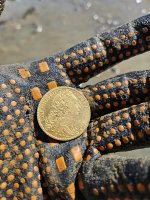The History Channel has received a permit to dig up the body of 1930s gangster John Dillinger from his grave at a cemetery in Indiana. Why? Nobody really knows yet.
Dillinger became a folk hero for robbing banks as a kind of Robin Hood figure during the Great Depression. And by all accounts, Dillinger was strangely polite during his robberies, leading many average Americans to celebrate someone who they saw as simply sticking it to the bankers. But Dillinger was killed in a shootout with police in Chicago during the summer of 1934.
Some have speculated over the years that Dillinger’s body may not actually be buried in the grave that has been his supposed resting place since 1934. And the best working guess is that the producers from the History Channel simply want to see if he’s actually buried there. But even if Dillinger really is buried on the north side of Indianapolis, the History Channel might have a bit of difficulty getting to the body, according to historians in Indiana.
Dillinger became a folk hero for robbing banks as a kind of Robin Hood figure during the Great Depression. And by all accounts, Dillinger was strangely polite during his robberies, leading many average Americans to celebrate someone who they saw as simply sticking it to the bankers. But Dillinger was killed in a shootout with police in Chicago during the summer of 1934.
Some have speculated over the years that Dillinger’s body may not actually be buried in the grave that has been his supposed resting place since 1934. And the best working guess is that the producers from the History Channel simply want to see if he’s actually buried there. But even if Dillinger really is buried on the north side of Indianapolis, the History Channel might have a bit of difficulty getting to the body, according to historians in Indiana.
Indiana health department spokeswoman Jeni O’Malley said that based on the permit, the agency expects Dillinger’s body will be exhumed and reinterred on Sept. 16 — the date listed on the document.
But digging up Dillinger’s grave might prove a difficult task because days after his son’s funeral, Dillinger’s father had the casket reburied under a protective cap of concrete and scrap iron topped by four reinforced-concrete slabs, said Susan Sutton, a historian with the Indiana Historical Society.
“I think they’re going to have a hard time getting through that,” Sutton said.
The concrete protection of the body was put in place because Dillinger’s family wanted to thwart vandals from getting at the gangster. Public figures who were both loved and hated throughout the 19th and early 20th century would sometimes take extra precautions to ensure that their bodies weren’t tampered with after death. Railroad baron George Pullman, who died in 1897, was famously buried much deeper than usual and encased in thick concrete to make sure the workers who despised him couldn’t desecrate his remains.But digging up Dillinger’s grave might prove a difficult task because days after his son’s funeral, Dillinger’s father had the casket reburied under a protective cap of concrete and scrap iron topped by four reinforced-concrete slabs, said Susan Sutton, a historian with the Indiana Historical Society.
“I think they’re going to have a hard time getting through that,” Sutton said.



 You mean someone in government Today was Killed back then Instead ?
You mean someone in government Today was Killed back then Instead ?


